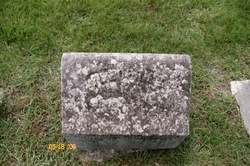Obituary:Frederick Baumann
A Memorial read at the Annual Meeting of the Illinois Chapter of the American Institute of Architects:
Frederick Baumann, Fellow of the American Institute of Architects and an Honorary Member of the Illinois Chapter died March 18th, 1921, at the age of ninety-five years. In his passing, each member of this Chapter lost an elder friend for whom he felt the deepest affectionate regard.
Mr. Baumann was born in Germany, in 1826 and there received his education and his preparation for the practice of architecture. He was of that noble revolutionary stock of 1848 which has furnished such valuable citizenship in our American democracy. It was Germany's loss and our gain when, in 1850, he left the Fatherland to take up his life and work in the United States. His life of seventy years in Chicago has fulfilled the promise of his youth. The revolutionary in Germany became the constructive pioneer and progressive citizen. He was a leader in design and construction in his active manhood and became the discriminating and appreciative friend and inspirer of his juniors in the later years of his life.
Those of us whose memory of Chicago buildings antedates the advent of steel construction will remember the Bryan Block, the Marine Building, the first Ashland Block, the Crosby Opera House, the Union National and the old City National Bank buildings, and the Metropolitan Block as evidences of his skill. His ability was shown conspicuously and generously given during the strenuous reconstructive period after the Chicago fire of 1871.
Our profession and the public were quick to profit by the proposal to construct separate pier foundations brought forth by him in a treatise on that subject in 1874, and this, with his suggestions for skeleton construction which were shown in the competitive drawings for a prominent Chicago office building, gave much impetus and direction to high building construction.
His interests were not confined to structural and executive matters. He loved the art of architecture and always encouraged progressive and original design. Most of the distinctive changes in building design in Chicago have appeared since he retired from active practice, but his frequent visits to the offices of his younger friends, his ready perception and appreciative expression when some new thought appeared in the design of their buildings and his unfailing and cheerful, even jolly interest in the affairs of this Chapter, endeared him to all who knew him and made his influence for all that was good and free in our work both strong and constant. His friendship was more than cordial, it was active and alert and it will live in our memories for years to come. Neither his mind nor his heart ever grew old.
By unanimous vote of the Illinois Chapter, this memorial was ordered spread upon the minutes and a copy inscribed and give to Mr. Baumann's family.
Obituary:Frederick Baumann
A Memorial read at the Annual Meeting of the Illinois Chapter of the American Institute of Architects:
Frederick Baumann, Fellow of the American Institute of Architects and an Honorary Member of the Illinois Chapter died March 18th, 1921, at the age of ninety-five years. In his passing, each member of this Chapter lost an elder friend for whom he felt the deepest affectionate regard.
Mr. Baumann was born in Germany, in 1826 and there received his education and his preparation for the practice of architecture. He was of that noble revolutionary stock of 1848 which has furnished such valuable citizenship in our American democracy. It was Germany's loss and our gain when, in 1850, he left the Fatherland to take up his life and work in the United States. His life of seventy years in Chicago has fulfilled the promise of his youth. The revolutionary in Germany became the constructive pioneer and progressive citizen. He was a leader in design and construction in his active manhood and became the discriminating and appreciative friend and inspirer of his juniors in the later years of his life.
Those of us whose memory of Chicago buildings antedates the advent of steel construction will remember the Bryan Block, the Marine Building, the first Ashland Block, the Crosby Opera House, the Union National and the old City National Bank buildings, and the Metropolitan Block as evidences of his skill. His ability was shown conspicuously and generously given during the strenuous reconstructive period after the Chicago fire of 1871.
Our profession and the public were quick to profit by the proposal to construct separate pier foundations brought forth by him in a treatise on that subject in 1874, and this, with his suggestions for skeleton construction which were shown in the competitive drawings for a prominent Chicago office building, gave much impetus and direction to high building construction.
His interests were not confined to structural and executive matters. He loved the art of architecture and always encouraged progressive and original design. Most of the distinctive changes in building design in Chicago have appeared since he retired from active practice, but his frequent visits to the offices of his younger friends, his ready perception and appreciative expression when some new thought appeared in the design of their buildings and his unfailing and cheerful, even jolly interest in the affairs of this Chapter, endeared him to all who knew him and made his influence for all that was good and free in our work both strong and constant. His friendship was more than cordial, it was active and alert and it will live in our memories for years to come. Neither his mind nor his heart ever grew old.
By unanimous vote of the Illinois Chapter, this memorial was ordered spread upon the minutes and a copy inscribed and give to Mr. Baumann's family.
Family Members
Sponsored by Ancestry
Advertisement
Advertisement












